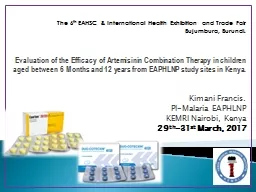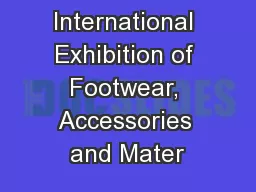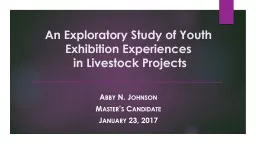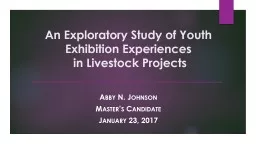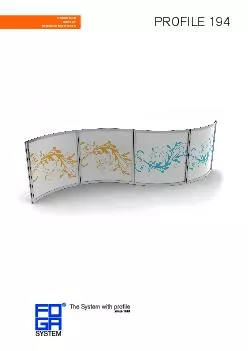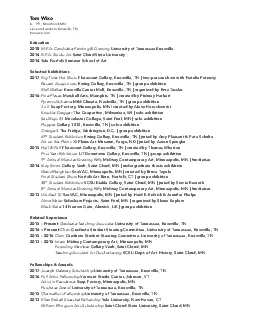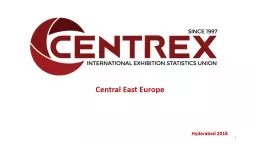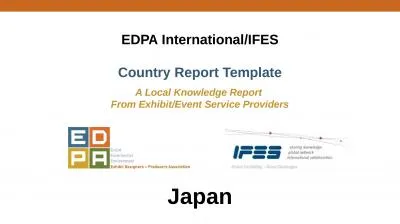PPT-The 6 th EAHSC & International Health Exhibition and Trade Fair
Author : slygrat | Published Date : 2020-06-23
Bujumbura Burundi Evaluation of the Efficacy of Artemisinin Combination Therapy in children aged between 6 Months and 12 years from EAPHLNP study sites in Kenya
Presentation Embed Code
Download Presentation
Download Presentation The PPT/PDF document "The 6 th EAHSC & International Heal..." is the property of its rightful owner. Permission is granted to download and print the materials on this website for personal, non-commercial use only, and to display it on your personal computer provided you do not modify the materials and that you retain all copyright notices contained in the materials. By downloading content from our website, you accept the terms of this agreement.
The 6 th EAHSC & International Health Exhibition and Trade Fair: Transcript
Download Rules Of Document
"The 6 th EAHSC & International Health Exhibition and Trade Fair"The content belongs to its owner. You may download and print it for personal use, without modification, and keep all copyright notices. By downloading, you agree to these terms.
Related Documents

